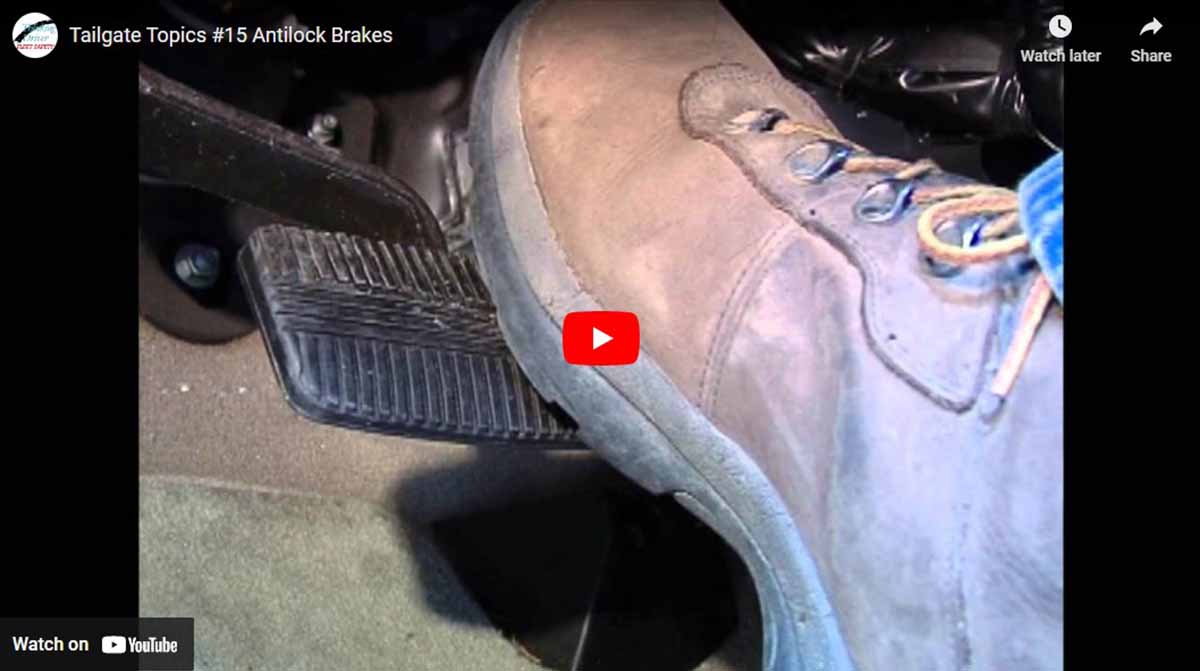Safety Meeting Planner & Agenda
Using Antilock Brakes Correctly!
Meeting Leader:
- Prepare in advance to make this meeting effective.
- Print and read over this entire agenda.
- Think about how you want to lead the meeting.
- Is there anything that is specific to your company or operation that you can include to personalize the information?
- Review the video for this session.
- Save the link to the video in your ‘Favourites’ folder on your browser for easy access.
- Open and then minimize the viewer just before the meeting to make the video introduction smooth.
Meeting Leader’s Guide:
Opening Statement:
Antilock brakes are standard on most vehicles now but not everyone know what they are really for or how to use them. This meeting will provide an overview of this important safety feature of your vehicle.
Questions for this Meeting:
Q: What is the purpose of antilock brakes?
Discuss possible answers:
- To stop easier in slippery conditions.
- To keep the vehicle from skidding.
- To make the brakes last longer.
- Others?
Correct answer is:
- Antilock brakes keep the wheels rotating even under severe braking in slippery conditions. This continuing rotation or “Antilock” allows the tire to maintain traction with the road surface and allows the driver to steer.
Q: Have you ever felt your antilock brakes activate? When? Why?
Answers may be:
When?/Where?
- Emergency stops
- Regular braking in winter conditions
- Wet roads
- Gravel or rough roads
- Downhill in slippery conditions
Why?
- Because the demand for traction has exceeded the tire’s ability to grip the road either because of rough braking, excess speed for conditions or sudden changes in the traction available to the vehicle.
- You are overdriving for the conditions.
Q: What does your vehicle behave like or feel like when the antilock brakes engage?
Discuss: there will be several descriptions of what the various vehicles do. Note that there will commonly be:
- Brake pedal feels different and/or vibrates.
- The antilock warning light on the dash may illuminate.
- The vehicle may make unusual sounds that can alarm some drivers if they are not prepared for it.
Q: What is the correct driver action when the antilock brakes engage?
If you are in an emergency situation, hold the pedal down hard and don’t let up until danger is passed.
Remember to look and steer where you want to go, not at any hazards that you are avoiding because we tend to steer where we look.
If your antilock brakes comes on regularly, under non-emergency conditions, you are overdriving for the conditions and should reduce speed and initiate your stops sooner to provide greater braking distance. This will allow you to brake more gently and not activate the antilock brakes.
Practical Challenge:
If you have not felt or practised what to do when antilock brakes engage, find a suitable place on a slippery surface to practise and become accustomed to the feel of antilock and remember to look and steer once the antilock brakes have engaged.









